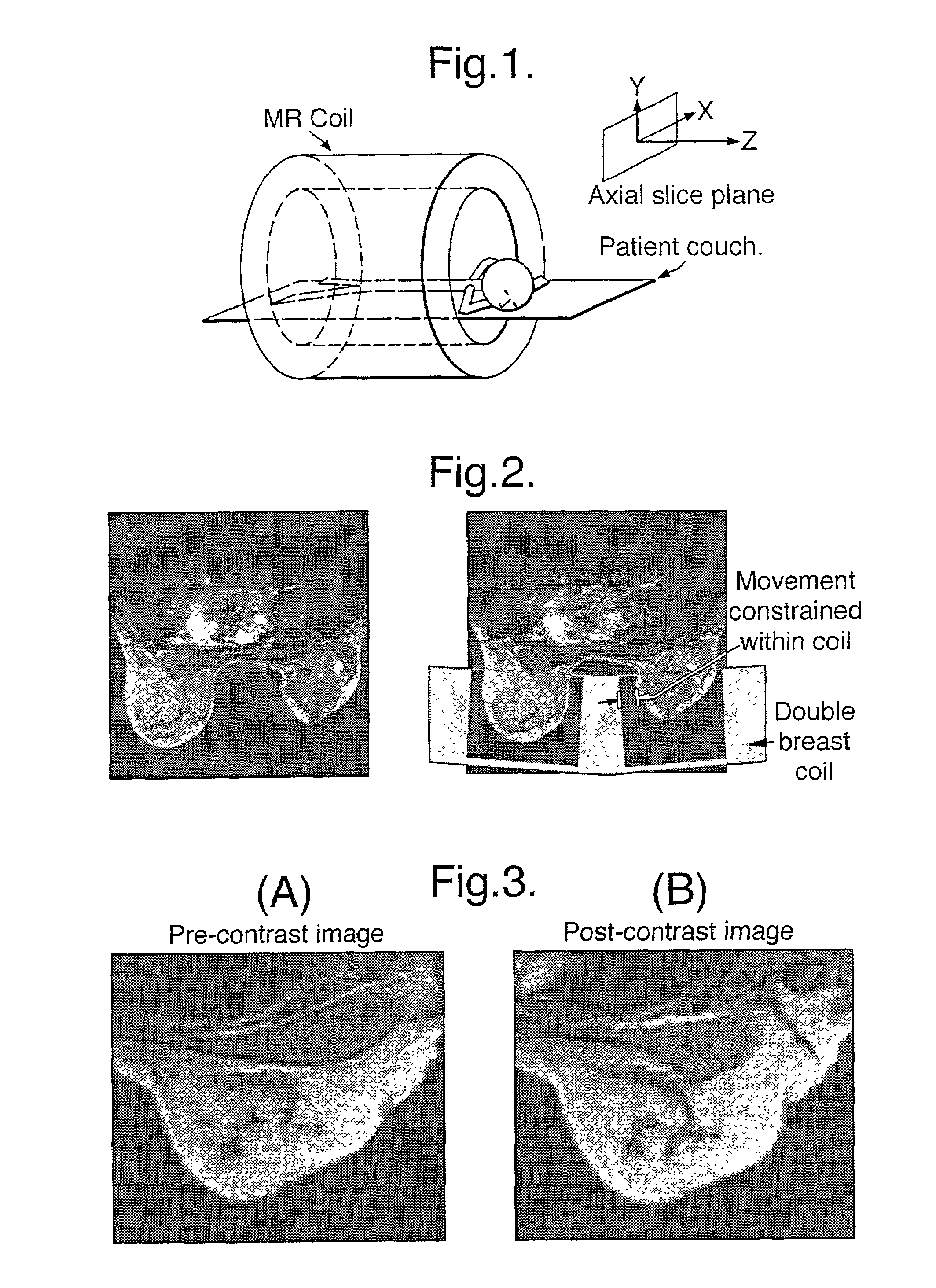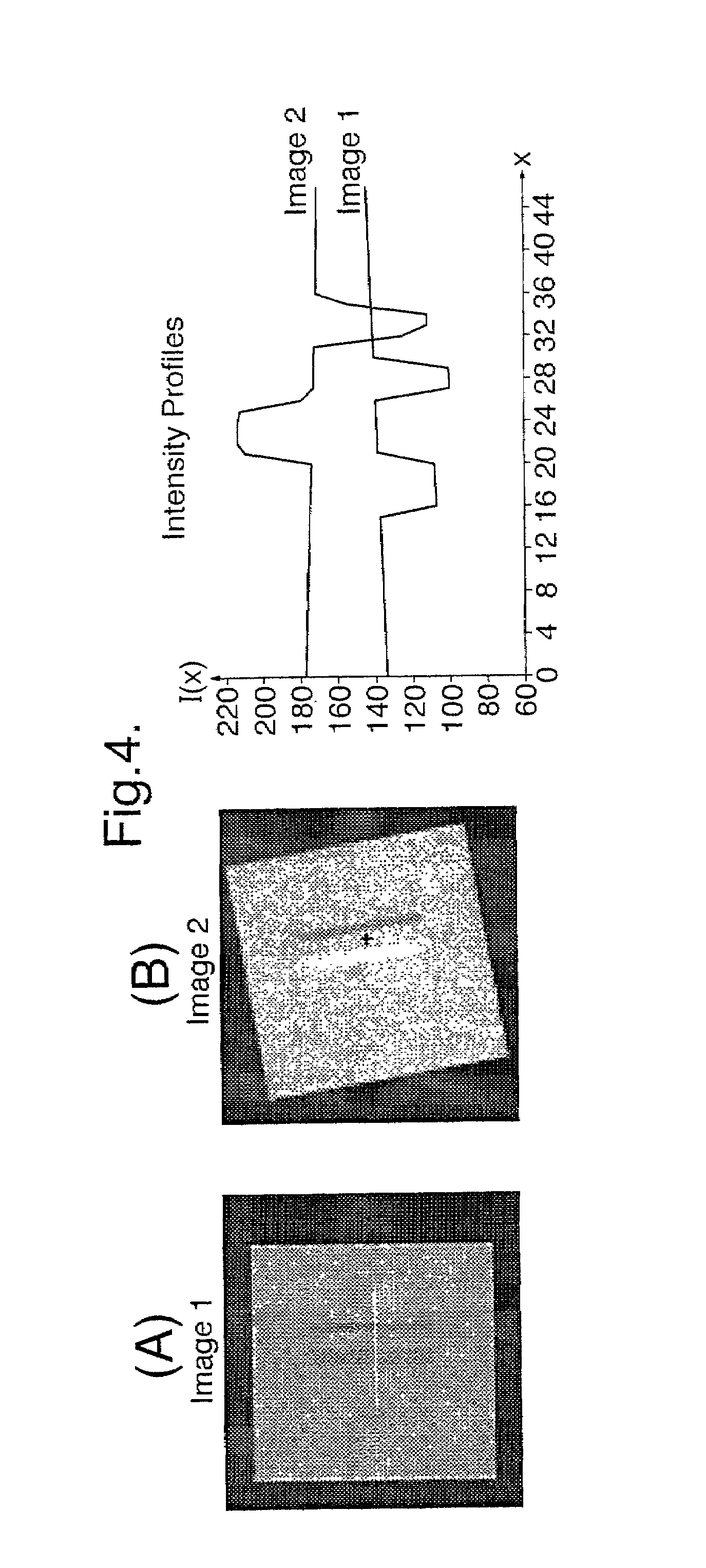Method and apparatus for image processing
- Summary
- Abstract
- Description
- Claims
- Application Information
AI Technical Summary
Benefits of technology
Problems solved by technology
Method used
Image
Examples
Embodiment Construction
[0035]Any image registration algorithm, i.e. an algorithm for detecting and correcting for movement between images, requires a method of determining whether two sub-images represent the same part of the imaged object. In the case of breast MRI, this amounts to determining whether the two sub-images represent the same anatomical location. As mentioned above, while many prior techniques rely on recognising geometrical features, this is not suitable for all images, especially images from breast MRI. Magnetic resonance signal intensity is a subject to change between images because of the deliberately induced contrast enhancement, and this change can be of the order of 100%. Further, the deformation which results from the movement is non-rigid. Thus the method of determining whether the two sub-images represent the same physical location is important. In this embodiment of the invention this is achieved by using a “similarity measure”, of which there are several types.
[0036]One measure w...
PUM
 Login to View More
Login to View More Abstract
Description
Claims
Application Information
 Login to View More
Login to View More - R&D
- Intellectual Property
- Life Sciences
- Materials
- Tech Scout
- Unparalleled Data Quality
- Higher Quality Content
- 60% Fewer Hallucinations
Browse by: Latest US Patents, China's latest patents, Technical Efficacy Thesaurus, Application Domain, Technology Topic, Popular Technical Reports.
© 2025 PatSnap. All rights reserved.Legal|Privacy policy|Modern Slavery Act Transparency Statement|Sitemap|About US| Contact US: help@patsnap.com



